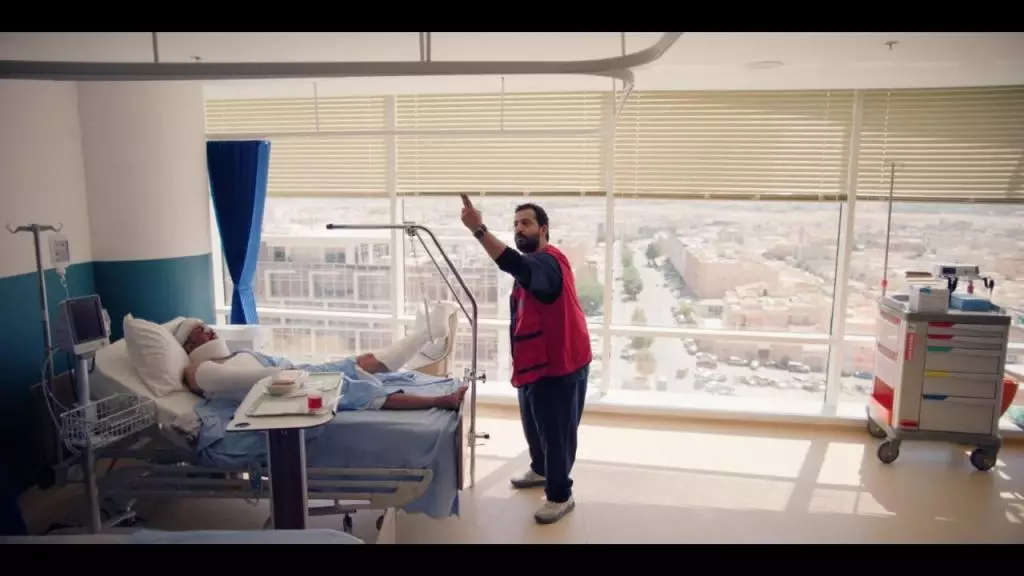The Middle East, often overshadowed by the global dominance of Hollywood, is beginning to carve out its unique identity in the film industry. A noteworthy development is the emergence of the Saudi Arabian comedy feature film “Esaaf,” directed by the accomplished Colin Teague. Joining forces with local superstar Ibrahim Al Hajjaj and former MBC Studios chief Peter Smith, this production signifies a critical juncture for Saudi cinema, seeking both regional recognition and international appeal.
“Esaaf,” working title meaning “Ambulance,” is a narrative that not only introduces audiences to the realm of Saudi comedy but does so through an entertaining lens. The film follows two bumbling paramedics who unwittingly stumble into a kidnapping scheme, thus placing them far outside their comfort zone. This comedic twist reflects a growing trend in cinema to address serious themes, such as crime and incompetence, through humor. It allows filmmakers to present engaging stories that resonate while also providing a satirical take on social issues.
This film marks an auspicious beginning for Al Hajjaj’s House of Comedy and Talal Anazi’s Black Light. They are tapping into a burgeoning domestic market, harnessing the comedic genius of Al Hajjaj—who gained popularity from his record-breaking film “Sattar”—to help shape the comedic landscape of Saudi film.
Teague’s involvement is instrumental, bringing his extensive experience to the project. Known for his previous works on well-received MBC productions, including “Rashash” and “The Devil’s Promise,” Teague presents a strong pedigree in storytelling. His ability to create compelling narratives that resonate with local culture suggests that “Esaaf” could appeal not only to a Saudi audience but could, importantly, find footing internationally as well.
Co-written by Alberto Lopez, the film embodies a rich collaboration between culture and creativity. Lopez’s previous experience – crafting screenplays for productions such as Mubi’s “Rupture” – allows for a multifaceted approach to storytelling that enhances the film’s depth. This diverse team of talents is poised to create a unique cinematic experience that melds local comedic flavors with universally relatable tropes.
Al Hajjaj’s remarks on the potential impact of “Esaaf” are indicative of a significant shift in the Saudi film landscape. With aspirations to produce one or two comedy films or series each year, the intention is clear: to enrich the local storytelling culture while entertaining viewers. Drawing from the overwhelming success of “Sattar,” which broke box office records, it is evident that there is a strong appetite for comedic content within the region.
Smith’s remarks further bolster these ambitions, likening “Esaaf” to blockbusters like “Bad Boys” and “Rush Hour,” albeit at a fraction of the budget. His vision suggests that “Esaaf” aims to elevate local cinema to compete with larger productions, demonstrating a belief in the quality and potential of Saudi stories.
As the film is prepared for its anticipated release slated for April next year, distribution strategies are actively being crafted. Smith’s optimism about the growing market for Arabic content signals a collaborative approach toward cultivating local talent and narratives. It reflects a broader cultural shift, acknowledging both the challenges and opportunities present in this rapidly expanding industry.
“Esaaf” stands not only as a testament to the evolving nature of Saudi cinema but also represents an essential stepping stone for filmmakers in the region. The collaboration between established professionals and local talent promises to generate fresh, engaging narratives that speak to Saudi audiences while echoing their experiences. The optimistic outlook for the film’s reception demonstrates a real potential for growth and change within the industry, establishing Saudi Arabia as an exciting new voice in global cinema.


Leave a Reply